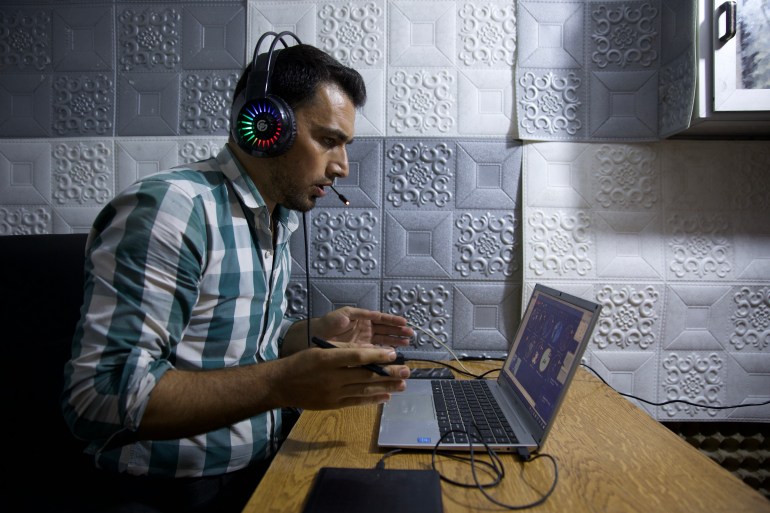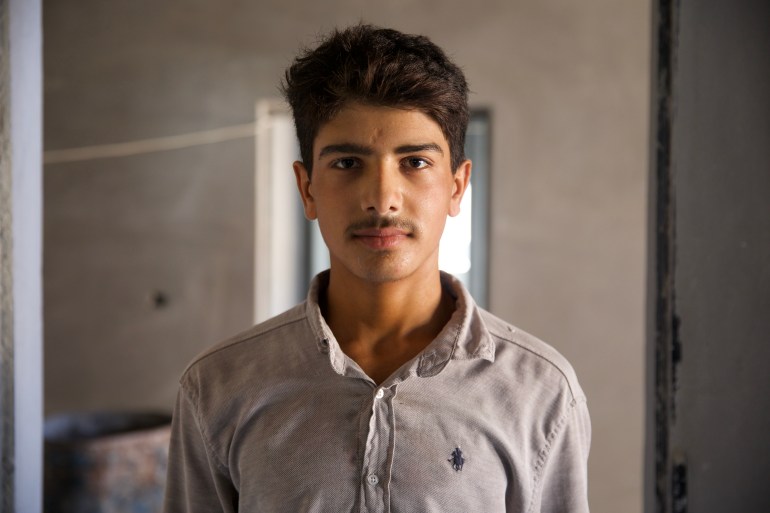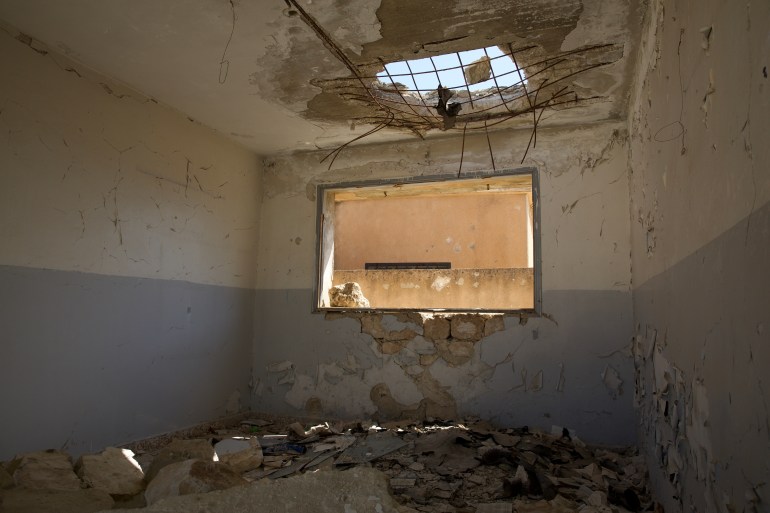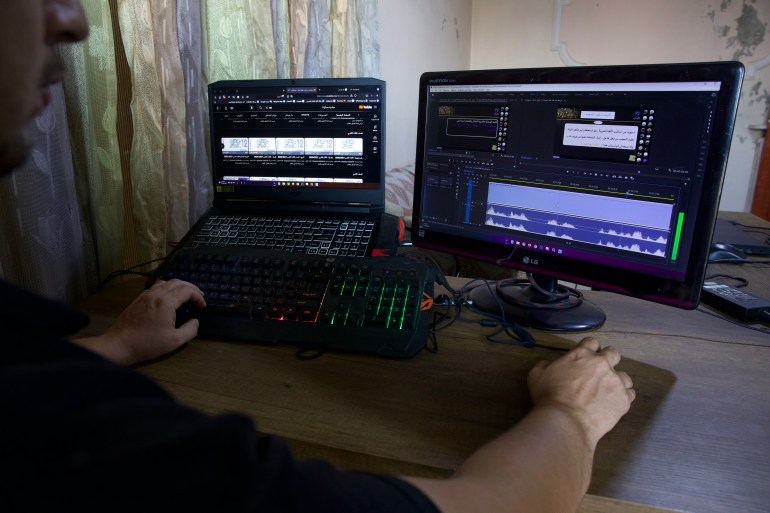The sixth grader was knocked unconscious and when he came to, he saw his friends’ bodies lying around the schoolyard where they had been playing just hours earlier.
It had been a normal school day in the town of Jarjanaz until the massacre that changed forever the lives of the children who survived it.
Omar has not been to school since, especially after having to work to help support his family, but now a new education option has allowed him to dream once more and hope that one day he will be able to go to university.
Masarat
Omar’s school has not been rebuilt yet, but that is no longer such an obstacle as he can study at home, following lessons on his mobile phone.
He can attend live lessons on an online conferencing platform or watch recorded lessons on YouTube, all uploaded by the Masarat Initiative.
This year, he is preparing to take his high school exam so he can go to university.
“It was very difficult at the start,” he said. “I wasn’t able to study or learn much, but I kept going until I succeeded.”

Twenty teachers and dozens of technical assistants work at Masarat, delivering the entire Syrian curriculum online so students can access the lessons whenever that works for them.
Their online audience is not just children; there are also adults who would like to continue their education but cannot access a school.
“We don’t have a specific age group. We have children in the ninth and twelfth grades, and we also have people over 40 years old,” said Mahmoud Salloum, educational leader at Masarat.
Since Masarat first began broadcasting in 2020, some 18,000 students have benefited from the volunteer initiative, and at the start of the current academic year, there are 12,800 students registered.
Trying to carry on
When parents in Syria send their children to school, they worry a lot less about low grades than they do over their lives, especially in the northwest, where artillery and air raids still target civilians after more than 12 years of war.

“Sometimes we would be in school when the bombing starts, so school stops for a week,” Omar said, recalling the years before the bombing of his school.
Only two-thirds of Syria’s schools are at all functional after the violence, and 2.4 million children are out of school. Some 1.6 million students are also at risk of dropping out as poverty rises to nearly 90 percent in some parts of Syria, forcing children into work situations or child marriage.
On February 6, massive earthquakes struck southern Turkey and northern Syria, damaging hundreds more schools in northwest Syria and leaving one million children severely lacking educational opportunities and in danger of complete deprivation.
Omar tried to continue his education for a year after the bombing, but then he had to work. “I work to make a living so my family doesn’t need aid,” the 17-year-old said.
Live, and online
In his office in the city of Idlib, Arabic teacher Salloum talks to his students through his laptop’s camera, delivering lessons he has prepared.
“Masarat Initiative was a lifeline,” Salloum said, pointing to success stories of Masarat students who were able to enter university.

The initiative focuses on preparing students for middle and high school diplomas, taking into account problems the region suffers, like weak internet and the fact that nearly everybody labours for long hours just to survive.
The initiative also solved the challenge of the lack of funding to rebuild schools and avoided security risks.
Even after a truce came into effect in 2020, attacks by the Syrian regime and its allies on northwest Syria continued and schools were still being targeted.
Forty schools were hit in 2020, followed by seven in 2021, then two in 2022. This year has seen six schools hit until September 3, according to the Syria Civil Defence (White Helmets).
“The attacks to which our teams responded are all documented and demonstrate without a doubt a serious violation by the [President Bashar al-]Assad regime of international humanitarian law by targeting schools,” said Nada al-Rashed, a member of the White Helmets board of directors.

A recent report by the Syria Justice and Accountability Centre, titled Killing the Future and published on September 6, argued that al-Assad’s strategy assigned no value to the lives of children, in spite of years of United Nations reports that called Syrian children “a generation at risk of being lost”.
Al-Rashed believes the only way to restore Syrian children’s future is to offer them the protection they need.
“The international community must put an end to the deadly attacks on children, protect them, hold accountable those who committed crimes against them, and make every effort to support children to restore their future because they are the only guarantee of Syria’s future,” she said.
Omar agrees, as he does not think he can build a future as a labourer.
“Without schooling, we will not benefit from anything… after I get my high school certificate, I’ll go after my dream and study civil engineering.”

